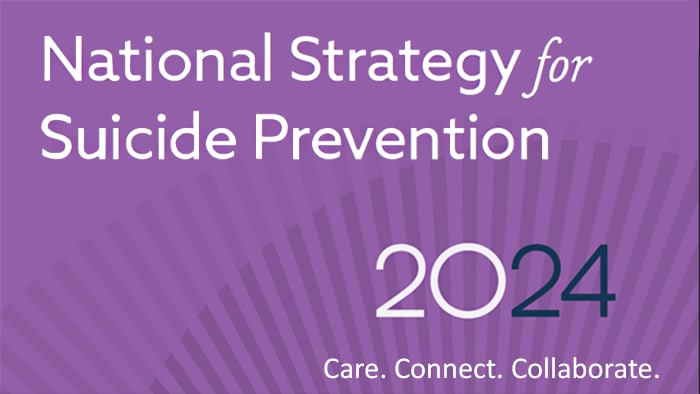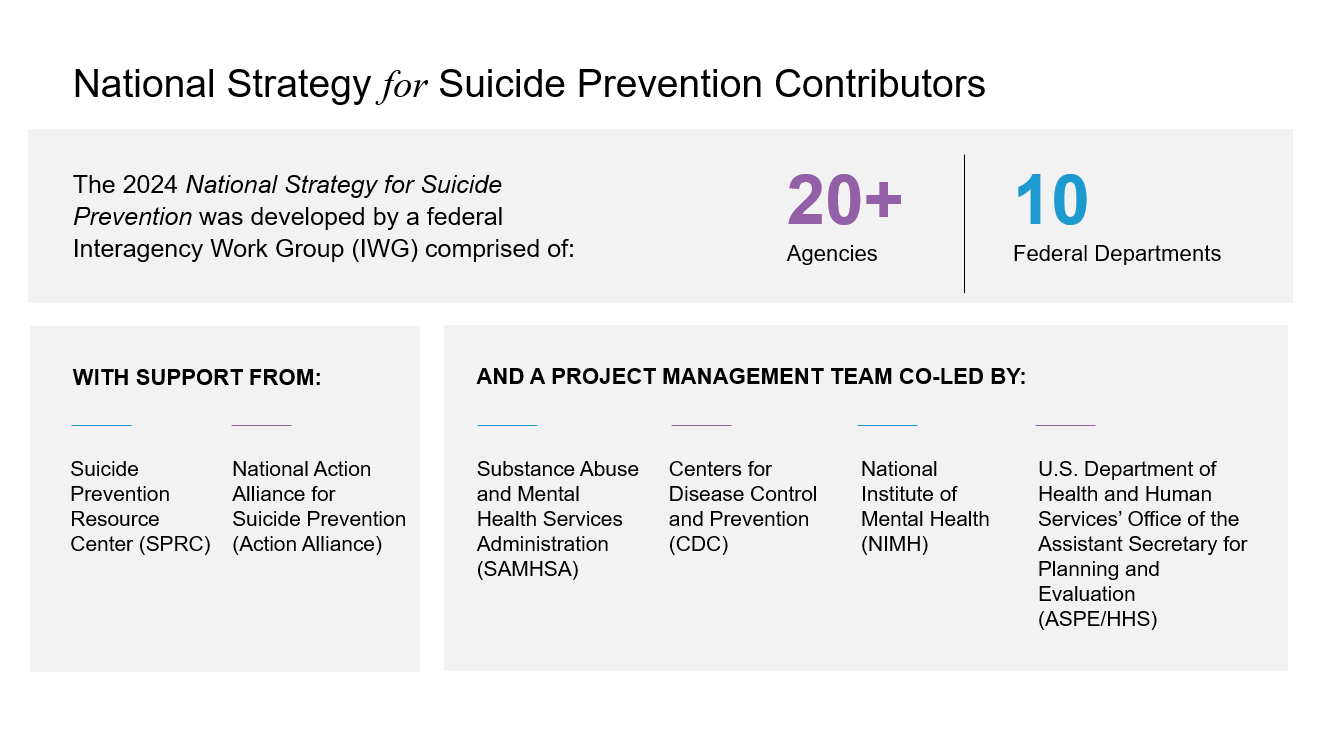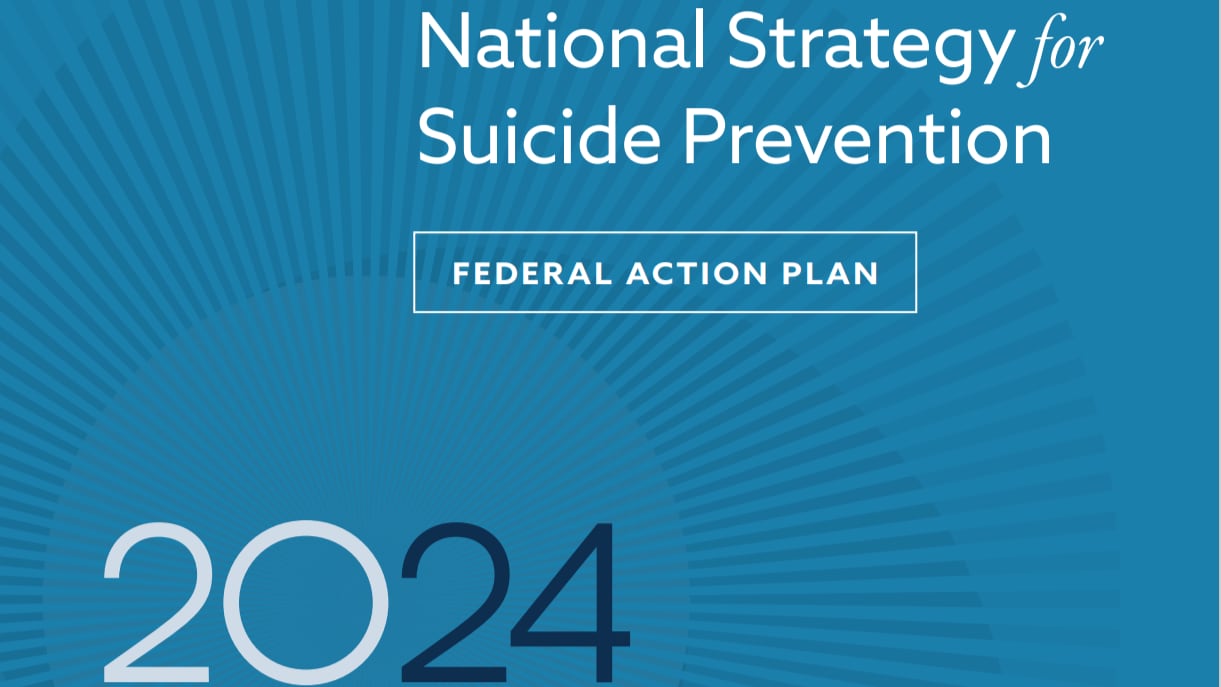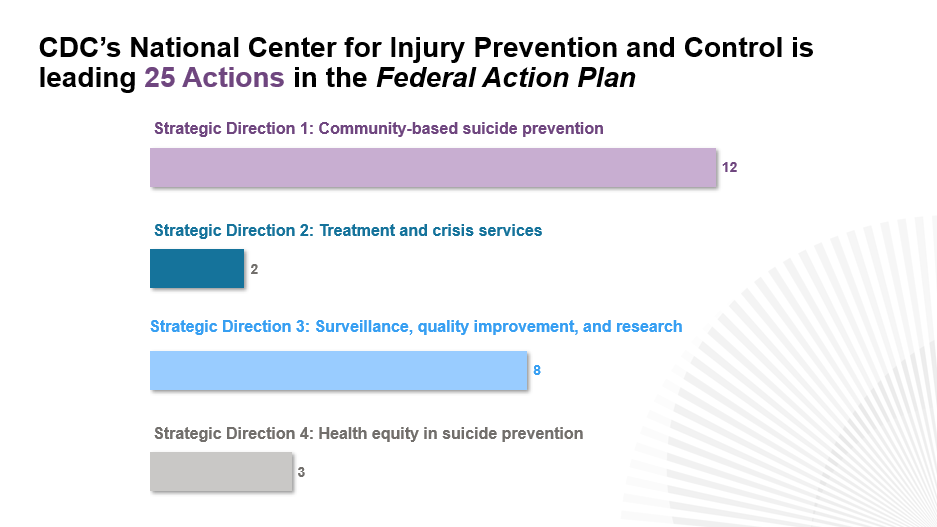At a glance
The 2024 National Strategy for Suicide Prevention provides concrete recommendations for addressing gaps in the suicide prevention field. It is accompanied by the Federal Action Plan, which includes over 200 actions across the Federal government to be taken over the next three years in support of these goals.

About the National Strategy
The 2024 National Strategy for Suicide Prevention (NSSP) is a bold new 10-year, comprehensive, whole-of-society approach to suicide prevention that provides concrete recommendations for addressing gaps in the suicide prevention field. This coordinated and comprehensive approach to suicide prevention at the national, state, tribal, local, and territorial levels relies upon critical partnerships across the public and private sectors. People with lived experience are critical to the success of this work.
The National Strategy seeks to prevent suicide risk in the first place; identify and support people with increased risk through treatment and crisis intervention; prevent reattempts; promote long-term recovery; and support survivors of suicide loss.

Strategic directions and goals
The 2024 National Strategy includes 15 goals and 87 objectives organized under four strategic directions:
Strategic Direction 1: Community-Based Suicide Prevention
- Goal 1: Establish effective, broad-based, collaborative, and sustainable suicide prevention partnerships.
- Goal 2: Support upstream comprehensive community-based suicide prevention.
- Goal 3: Reduce access to lethal means among people at risk of suicide.
- Goal 4: Conduct postvention and support people with suicide-centered lived experience.
- Goal 5: Integrate suicide prevention into the culture of the workplace and into other community settings.
- Goal 6: Build and sustain suicide prevention infrastructure at the state, tribal, local, and territorial levels.
- Goal 7: Implement research-informed suicide prevention communication activities in diverse populations using best practices from communication science.
Strategic Direction 2: Treatment and Crisis Services
- Goal 8: Implement effective suicide prevention services as a core component of health care.
- Goal 9: Improve the quality and accessibility of crisis care services across all communities.
Strategic Direction 3: Surveillance, Quality Improvement, and Research
- Goal 10: Improve the quality, timeliness, scope, usefulness, and accessibility of data needed for suicide-related surveillance, research, evaluation, and quality improvement.
- Goal 11: Promote and support research on suicide prevention.
Strategic Direction 4: Health Equity in Suicide Prevention
- Goal 12: Embed health equity into all comprehensive suicide prevention activities.
- Goal 13: Implement comprehensive suicide prevention strategies for populations disproportionately affected by suicide, with a focus on historically marginalized communities, persons with suicide-centered lived experience, and youth.
- Goal 14: Create an equitable and diverse suicide prevention workforce that is equipped and supported to address the needs of the communities they serve.
- Goal 15: Improve and expand effective suicide prevention programs for populations disproportionately impacted by suicide across the life span through improved data, research, and evaluation.
The Federal Action Plan

The National Strategy is accompanied by the first ever Federal Action Plan (Action Plan), which identifies more than 200 actions across the Federal government to be taken over the next three years in support of the NSSP's goals.
These actions include:
- Evaluating promising community-based suicide prevention strategies
- Identifying ways to address substance use/overdose and suicide risk together in the clinical setting
- Funding a mobile crisis locator for use by 988 crisis centers
- Increasing support for survivors of suicide loss and others whose lives have been impacted by suicide
These actions will be monitored and evaluated regularly to determine progress and success, and to further identify barriers to suicide prevention.
Injury Center's actions

CDC’s National Center for Injury Prevention and Control is leading 25 actions in the Federal Action Plan.
